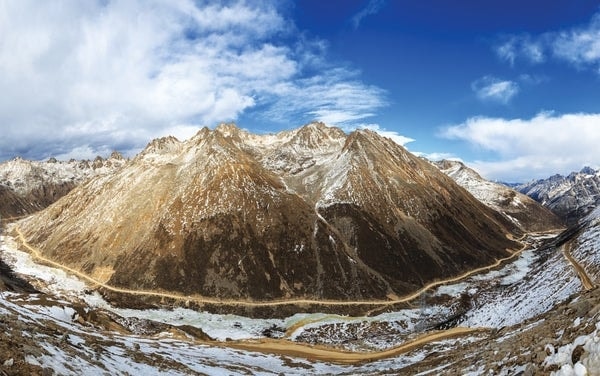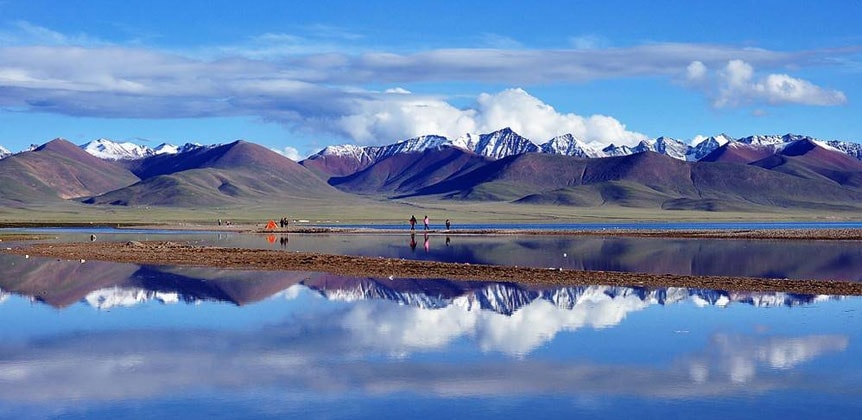The Tibetan Plateau is experiencing a severe climate crisis, with glaciers melting three times faster than the global average.

This land, as large as Western Europe, with more than half of its area lying at an altitude of 4,000 m above sea level, is home to 46,000 glaciers, forming the third largest ice mass in the world.
However, the melting of Himalayan glaciers in Tibet is not just a regional problem but also an urgent warning about the risk to the entire global climate system.
The Tibetan Plateau is not only a vast landmass, but also a vital source of fresh water for more than two billion people across Asia.
The glaciers on this plateau feed nine major river basins, including the Indus, Ganges, Brahmaputra, Salween and Yangtze, nourishing thousands of communities, villages and cities in South and Southeast Asia.
The region is therefore an important resource for the world's 10 most populous countries surrounding the plateau, including Afghanistan, Pakistan, India, Nepal, Bangladesh, China, and Southeast Asian countries such as Cambodia, Myanmar, Laos, Vietnam, and Thailand.
However, climate change is occurring rapidly, causing unprecedented levels of glacier melting, snowmelt and permafrost degradation, leading to water crises across the region. Glaciers are retreating, snowpack is decreasing and winters are becoming shorter, negatively impacting water supplies and increasing the risk of flooding and drought.
Studies show that temperatures in Tibet have increased significantly since the 1950s, and have increased particularly sharply since the 1980s. Over the past 50 years, temperatures have increased by 1.3°C, three times the global average. At this rate, experts warn that 66% of Tibet's glaciers are at risk of melting by 2050.
Human factor
Besides natural factors, human activities also accelerate the process of environmental degradation and destruction in Tibet.
The huge hydroelectric dams built on major rivers flowing from the plateau to serve the electricity needs of the countries have caused ecological imbalance. Water diversion projects from Tibet, large-scale mineral mining activities (copper, gold, silver, chromium, lithium...) are also threatening the environment, causing environmental degradation, land conflicts and economic inequality.
Notably, the bottled water industry is also booming in Tibet, draining already depleted water resources. Overexploitation and pollution of water resources have had serious consequences for the environment and the lives of local people.
Governments, despite claiming to be committed to environmental conservation, have been pushing infrastructure projects and resource extraction activities on the Tibetan Plateau. They have built structures such as roads, railways, and border villages that have had negative impacts on the ecosystem and disrupted the lives of nomadic people.
While global climate forums are trying to find solutions to environmental problems, the voices of the Tibetan people are being ignored. The problems of the Himalayan region are not included in the main agenda of international climate meetings.
Multilateral climate conferences are also losing credibility due to lack of political will. Important meetings such as the 29th United Nations Climate Change Conference (COP29) were absent from many major world leaders, reflecting their indifference to the global issue.
Solution

Tackling the climate crisis in Tibet requires strong international cooperation and the involvement of all stakeholders.
Global forums can play an important role in connecting downstream countries to the situation in Tibet. It is important to engage the Tibetan people, especially the nomads, to preserve their traditional knowledge and skills in resource management and climate change response.
Relevant international organizations within the United Nations need to cooperate more closely to monitor regional climate change, collect scientific data and support appropriate response policies.
Tibet, as a source of water for billions of people, needs to be recognized for its global ecological importance. International efforts must focus on protecting glaciers, stopping harmful mining activities, and supporting local people to cope with climate change.
These efforts should also include providing technical and financial assistance to affected countries, and promoting transboundary cooperation to manage water resources and reduce disaster risks.
The Tibetan Plateau is experiencing a severe climate crisis that requires urgent global attention and action.
Ignoring the situation in Tibet would have dire consequences not only for the region, but also for the entire global climate system.